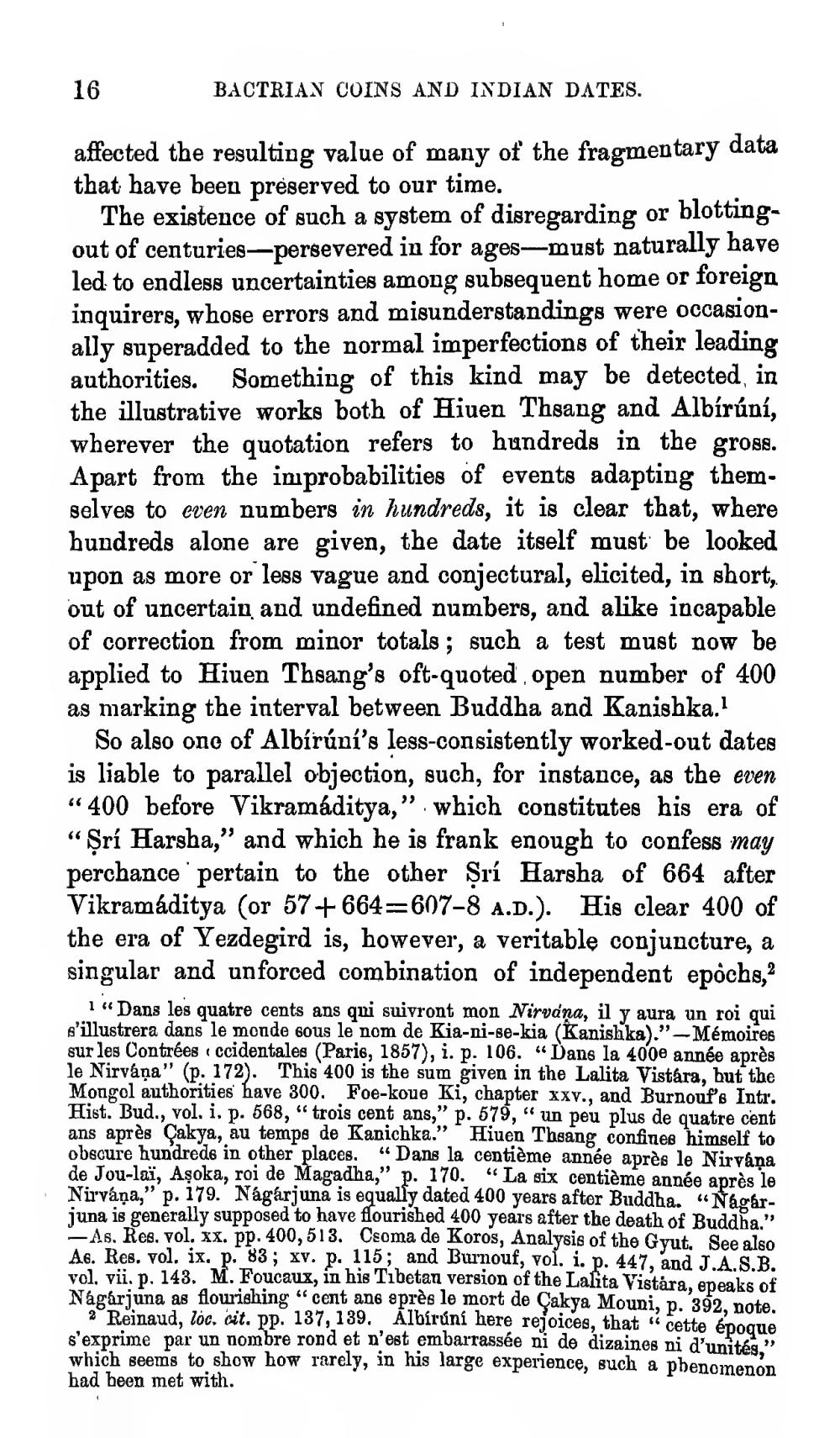________________
16
BACTRIAN COINS AND INDIAN DATES.
affected the resulting value of many of the fragmentary data that have been preserved to our time.
The existence of such a system of disregarding or blottingout of centuries-persevered in for ages-must naturally have led to endless uncertainties among subsequent home or foreign inquirers, whose errors and misunderstandings were occasionally superadded to the normal imperfections of their leading authorities. Something of this kind may be detected in the illustrative works both of Hiuen Thsang and Albírúní, wherever the quotation refers to hundreds in the gross. Apart from the improbabilities of events adapting them. selves to even numbers in hundreds, it is clear that, where hundreds alone are given, the date itself must be looked upon as more or less vague and conjectural, elicited, in short, out of uncertain and undefined numbers, and alike incapable of correction from minor totals; such a test must now be applied to Hiuen Thsang's oft-quoted open number of 400 as marking the interval between Buddha and Kanishka.?
So also one of Albírání's less-consistently worked-out dates is liable to parallel objection, such, for instance, as the even “400 before Vikramaditya," which constitutes his era of “Srí Harsha," and which he is frank enough to confess may perchance pertain to the other Sri Harsha of 664 after Vikramaditya (or 57 +664=607-8 A.D.). His clear 400 of the era of Yezdegird is, however, a veritable conjuncture, a singular and unforced combination of independent epochs,
1"Dans les quatre cents ans qui suivront mon Nirvana, il y aura un roi qui d'illustrera dans le monde sous le nom de Kia-ni-se-kia (Kanishka)." - Mémoires sur les Contrées ccidentales (Paris, 1857), i. p. 106. “Dans la 400e année après le Nirvana" (p. 172). This 400 is the sum given in the Lalita Vistára, but the Mongol authorities have 300. Foe-koue Ki, chapter xxv., and Burnouf's Intr. Hist. Bud., vol. I, p. 568,"trois cent ans," p. 579, “ un peu plus de quatre cent ans après Çakya, au temps de Kanichka.” Hiuen Theang confines himself to obscure hundrede in other places. “Dans la centième année après le Nirvana de Jou-laï, Asoka, roi de Magadha," p. 170. “La six centième année après le Nirvana," p. 179. Nagarjuna is equally dated 400 years after Buddha. "Nagarjuna is generally supposed to have flourished 400 years after the death of Buddha." _As. Res, vol. xx. pp. 400,513. Csoma de Koros, Analysis of the Gyut. See also AeRes, vol. ix, p. 83; xv. p. 115; and Burnouf, vol. i. p. 447, and J.A.S.B. vol. vii. p. 143. M. Foucaux, in his Tibetan version of the Lalita Viståra. epeaks of Nagarjuna as flourishing "cent ant après le mort de Çakya Mouni, p. 392, note.
2 Reinaud, loc. cit. pp. 137, 139. Albírání here rejoices, that “ cette époque s'exprime par un nombre rond et n'est embarrassée ni de dizaines ni d'unités.” which seems to show how rarely, in his large experience, such a phenomenon had been met with.




